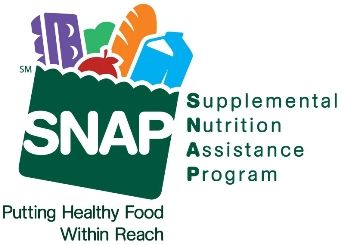CA welfare state wants more ‘clients’
by CalWatchdog Staff | March 22, 2013 11:38 am
March 22, 2013
By Katy Grimes
 The Employment Development Department used to be called the “Unemployment Department.” And state welfare recipients are now “clients.”
The Employment Development Department used to be called the “Unemployment Department.” And state welfare recipients are now “clients.”
The majority party in the California Legislature appears determined on expanding social services in the state despite evidence demonstrating that the programs don’t necessarily improve lives, as the very mixed record of the 50-year federal “War on Poverty”[1] confirms. While discussing the need for “safety net” programs for the poorest in the state, legislators always cast a wider net than necessary.
The Assembly held a committee hearing Wednesday about expanding mandatory universal government preschool in California. By Thursday, the Senate Health and Human Services Committee was focused on the CalWORKS program, and how to attract more “clients.” Expansion of the state’s Health and Human Services agency is an obvious goal.
CA has nation’s worst poverty rate
This push to expand government aid programs has as a backdrop California’s poverty rate of 23.5 percent[2] — the highest in the nation and much higher than the national average[3] of 16.1 percent. The U.S. Census Bureau[4] said the high poverty rate was driven in part by California’s high cost of living, which is never a focus of the Legislature.
The stated goal of Thursday’s Senate hearing was to get several questions answered, including “What does evidence indicate can help families avoid the negative consequences of poverty?”
The challenges of stress are made worse by poverty, according to Sarah Bohn of the Public Policy Institute of California and Ann Stevens, the director of UC Davis Center on Poverty Research.
Stevens said the well-known correlation between poverty in childhood and long-term effects mean poverty later in life, poor health and low educational achievement.
Subsidies for poor advocated, and more of them
“Constant stress is worse in poor people,” said Stevens. “Unobserved things in families in poverty lead to other bad outcomes.”
“Persistent poverty creates chronic stress for children,” Stevens added.
Stevens and Bohn advocated for subsidies for the poor, and for longer periods of time.
“A strong case can be made for reducing material deprivation,” Stevens said. “There’s growing credible evidence to support this.”
But both Stevens and Bohn also advocated for universal mandatory preschool. “There’s growing evidence to support intervention in early childhood and preschool,” Stevens said. She added this is crucial to break the cycle of poverty. “It’s not a trade-off,” said Stevens.
On welfare, mixed messages from Washington
Meanwhile, the federal government is sending out mixed messages. Under President Obama, one form of welfare has exponentially increased since he first took office in 2009. His administration, however, is also pressuring California to limit another type of welfare.
 “When Obama was inaugurated in January 2009, the number of Supplemental Assistance Nutrition Program [5](SNAP) recipients was 31,939,110[6]. By October 2012, the latest month reported, they had jumped to 47,525,329[7],” CNS News reported[8]. “That means the food stamp program grew by approximately 11,133 recipients per day from January 2009 to October 2012.” SNAP used to be known as the Food Stamp program.
“When Obama was inaugurated in January 2009, the number of Supplemental Assistance Nutrition Program [5](SNAP) recipients was 31,939,110[6]. By October 2012, the latest month reported, they had jumped to 47,525,329[7],” CNS News reported[8]. “That means the food stamp program grew by approximately 11,133 recipients per day from January 2009 to October 2012.” SNAP used to be known as the Food Stamp program.
CNS News also reported, “[F]ederal spending on SNAP has increased[9] every fiscal year that Obama has been in office. In FY 2009 — when SNAP was still known as the ‘Food Stamp’ program — the government spent $55.6 billion. According to an April 2012 report[10] from the Congressional Budget Office, SNAP enrollment increased by 70 percent between 2007 and 2011.”
In California, spending on such programs is going up. But the Brown administration is also trying to implement some of the welfare reforms seen in other states — because of federal pressure.
“The Governor’s budget proposes $20.3 billion from the General Fund for health programs—a 3.4 percent increase over 2012-13 estimated expenditures—and $8 billion from the General Fund for human services programs—a 7.9 percent increase over 2012-13 estimated expenditures,” the Legislative Analyst’s Office wrote in its 2013-14 “Analysis of the Health and Human Services Budget.”[11]
 Recent changes to the CalWORKs[12] program include a phase-out of exemptions from welfare-to-work requirements, and the introduction of a new 24-month limit on adult eligibility in the program.
Recent changes to the CalWORKs[12] program include a phase-out of exemptions from welfare-to-work requirements, and the introduction of a new 24-month limit on adult eligibility in the program.
Existing law requires each California county to provide cash assistance and other social services to needy families through the California Work Opportunity and Responsibility to Kids program. CalWORKs[12] uses funds from the federal Temporary Assistance to Needy Families block grant program, as well as state and county funds.
Reforms prompted by federal pressure
As a condition of the federal grant, the federal government requires states to meet work requirements. But California has been in violation of this rule[13], and was notified the state will be assessed penalties of $160 million by the federal government. This is just for 2008 and 2009. There is no word yet if California will be penalized for 2010, 2011 and 2012.
The state claims to have a plan to remedy this, but not by requiring CalWORK[14]S recipients to get to work.
“Planned state actions are projected to increase the state’s work participation rate by (1) increasing the number of countable cases that meet the federal work requirement through the work Incentive Nutritional Suppliment program, and (2) removing from the work participation requirement calculation certain CalWORKS cases that do not meet the federal work requirement,” the LAO reported[15].
The LAO estimates that California “may be compliant with the requirement by 2015.”
CalWORKS recipients are required to work 20, 30, or 35 hours per week, depending on family composition. California allows CalWORKS recipients to substitute mental health and substance abuse programs for work.
CalWORKS reductions may be reversed
California has made $700 million in reductions to the CalWORKS program since 2009. But now, the Legislature is actively pushing to expand the program.
SB 1041[16], passed in 2012, authorized the changes to the CalWORKS program, but only through 2012.
- “War on Poverty”: http://news.investors.com/ibd-editorials/062612-616212-war-on-poverty-failed-but-spending-continues.htm
- 23.5 percent: http://www.census.gov/prod/2012pubs/p60-244.pdf
- national average: http://www.census.gov/prod/2012pubs/p60-244.pdf
- U.S. Census Bureau: http://www.census.gov/prod/2012pubs/p60-244.pdf
- Supplemental Assistance Nutrition Program : http://www.fns.usda.gov/snap
- 31,939,110: http://www.fns.usda.gov/ora/MENU/Published/snap/FILES/Other/pai2009.pdf
- 47,525,329: http://www.fns.usda.gov/fns/key_data/october-2012.pdf
- reported: http://cnsnews.com/news/article/first-term-food-stamp-recipients-increased-11133-day-under-obama
- [F]ederal spending on SNAP has increased: http://cnsnews.com/news/article/federal-food-stamp-program-spent-record-804b-fy-2012
- April 2012 report: http://www.cbo.gov/publication/43175
- “Analysis of the Health and Human Services Budget.”: http://www.lao.ca.gov/analysis/2013/ss/hhs/health-human-services-022713.pdf
- CalWORKs: http://www.cdss.ca.gov/calworks/
- been in violation of this rule: http://www.lao.ca.gov/handouts/socservices/2013/CalWORKs-Background-032113.pdf
- CalWORK: http://www.cdss.ca.gov/calworks/
- reported: http://www.lao.ca.gov/handouts/socservices/2013/CalWORKs-Background-032113.pdf
- SB 1041: http://www.aroundthecapitol.com/billtrack/analysis.html?aid=246174
Source URL: https://calwatchdog.com/2013/03/22/ready-ca-welfare-state-wants-more-clients/